I’ve not read either of Chris Paolini‘s young-adult fantasy books, Eragon or Eldest (presumably there will be a third at some point, as these are billed as being part of the ‘Inheritance Trilogy’), but I saw a trailer for a movie adaptation of the first book, to be released this Christmas season.
A couple things caught my eye in this trailer: firstly, both Jeremy Irons and John Malkovich star. So far, we’re off to a good start.
The third, though, was a decidedly unusual (in my experience) take on dragon’s wings. In general, dragon wings are presented as structurally similar to a bat’s wings: a thin flesh webbing over a skeletal framework. If there’s any variation at all, its rarely in the wings themselves, but rather in the physiology of the beast itself, with the two most popular variations being either a six-limbed creature (forelegs, rear legs, and wings as a separate set of limbs, generally just behind the forelimbs) or a more bat-like four limbed creature (with the forward set of limbs doubling as both forelegs and wings).
Personally, I’ve always been partial to the four-limbed variety as to my mind, even though we’re dealing with a fantastical creature, it feels more “accurate” for the universe we live in: I can’t think of any naturally occuring six-legged creatures outside of the insect realm; all mammals or reptiles I know of are zero-, two-, or four-limbed (and while it’s been years since I’ve had any sort of biology, I believe there is evidence that all such creatures are genetically four-limbed, and it’s just a matter of whether any of the limbs have evolved into not developing, as with snakes).
(As an aside — one of the strongest disappointments I had with the last Harry Potter film, Harry Potter and the Goblet of Fire, was the lack of any screentime for the Chinese Dragon during the first challenge in the TriWizard Tournament. While only Harry’s dragon got any ‘hero’ time, we at least saw the miniature versions of all the others, however they were all fairly traditional dragons. I was really looking forward to even a glimpse of a Chinese style dragon, but was sadly denied. Pity, that.)
The upcoming Eragon, while using the more common six-limbed physiology, uses wings of a type I’ve not seen before. Rather than the bat-wing style, they look very much like bird’s wings, complete with feather-like patterning…however, they still appear to be skinned, not feathered.
Under the cut are a few screengrabs I took from the trailer that illustrate the wing style:
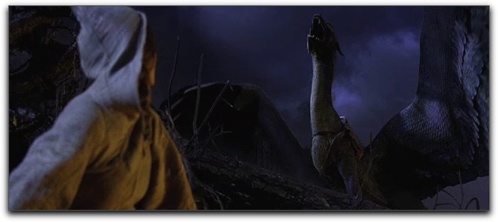
I’m quite curious to see how this look plays on the big screen, and whether it actually is what it appears to be, or if it’s just unusual lighting that is making dark feathers look like they’re not feathers, but skin.
![]()
“Piano Sonata, Op. 2/1 III. Menuetto: Allegretto” by Brendel, Alfred from the album Alfred Brendel Plays Beethoven (1993, 3:26).
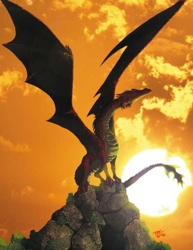
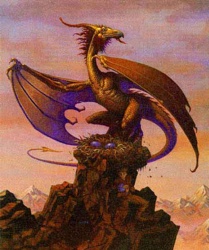
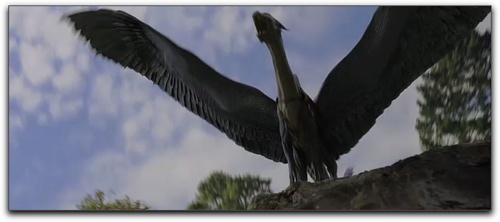

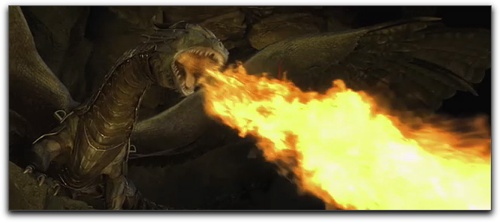
hey im am curently reading book two. i finished book one earlyer. good read! the tokin influence is serious. but then you think about christopher being 15 years old when he wrote the first book it is darn amazing. it will make a good movie im sure. mike send me your address so i can send back the galactica. i misplaced your info sorry bro!
Insects are characterised by having six legs. Of course there are exceptions: many larvae have no or additional legs (but these are stumpy and obviously different); some adults, especially parasitic forms, have reduced legs. Finally juvenile mites, copepods are six-legged.
Insects have a chitin exoskeleton. Because this is impermeable to gases, they have a system of branching internal breathing tubes (trachaea) connecting to the ouside through paired openings (spiracles) on each segment (generally). Because the exoskeleton is stiff, it is shed (ecdysis) regularly during growth; the number of moults is usually constant for a given species, and the stages between are called instars.
Insects are the most species-rich group of organisms on the planet.
Diagnostic features Almost all insects have six-legs, at least when adult.
Almost all organisms with six legs are insects – the exceptions are very tiny, although spiders and harvestmen can lose two legs, so care needs to be taken.
Any cold-blooded organism with wings (ie not bird or bat) is an insect.
It turns out that not every six-legged creepy crawly is an insect. Lawrence Berkeley Laboratory and University of Siena researchers have made the unexpected discovery that collembolans, a type of primitive arthropod long thought to be closely related to insects, are actually only distant relatives. The independent evolution of sixleggedness on at least two occasions demonstrates the remarkable utility of the hexapod body plan.
The convergent acquisition of useful body plans and specific body parts is certainly not uncommon; fins and flippers were independently acquired in fish such as tuna and sharks, and mammals such as dolphins and whales.
i LOVE the inheritance trilogy and i personally thought that the movie was a bit of a let down on the part it added in useless pointless bits, use “waise hail” FAR to much and i agree with the fact that even the book says that the wings were membranes, not like bird wings. but i like 6 limbed dragons and thought the books were BRILLIANT! i would definatly reccomend them.
hey, those books are good, but the third one i have yet to read, otherwise the dragons descriptions were simply good and gave at least a proper image of what was needed. The movie though seemed to create a different picture than what may have really been intended. Wings are actually a good detail to look at to try and decipher why these differences were made, because so much description goes into them to hel determine power.other than that, the movie was great, even though it deterred from the book in many ways.
Still i recomend the books to those who don’t mind those movie differences.
i no wat u mean. the books are amazing. ive read both of them and i agree with scott frith. the movie was a complete let down. when i saw it i actually hated it because i’d been expecting something as good as the book.
I can’t wait ’till the third book comes out!!!
I thought the movie was a let down when compared to the book, but if you think of it as a different story it is quite good. I didn’t like how they changed the battle to be outside of the mountain instead of in it’s caves (and made it look more like Tolkiens’ work in the process), and I didn’t like how they took out a LOAD of information critical to the second book, but like I said if you think of it as a different story all together it’s not bad. I think also if they hadn’t of taken out and changed so much of the story in the movie (like all the politics & family ties & conversations& foreshadowing & dragon facts) they would have made it less resemble other stories and shown that it was in fact it’s own. The second book I think is better than the first anyway because it has so much “meat” in it, that is to say it has a lot of info on everything that is going on behind, around, and with Eragons’ story.
As for dragons, if a dragon were a four limbed creature it would have to more resemble a large bat with a long neck and tail because if it had wings that were not attached to their sides or were shorter than the trunk of the body they would be unbalanced and unable to fly. It is possible they were more bat-like but with larger “hands” or “fingers” on the joints that they would need to occasionally walk on. If they were though they would also have smaller less developed hind legs as well and would rely mostly on pulling themselves along with their wings. This would need to be so or they would have to heavy a back end to maintain a horizontal position when flying and not be dragged down by their tail & hind legs. They might have been mammals if they were bat-like, but not necessarily. As far as wings go scales that look like, and are patterned after, feathers simply would not work because scales are heavier than feathers by quite a lot (if you want to fly with them). The feather look is cool for the movie, & I really did like it, but it is simply too heavy a kind of wing to enable flight especially for so large an animal.
However had they been six limbed they would need wings which were just behind the forelegs and placed higher on the back to give a sort of double shoulder look. the wings would need a long bicep/humerus and a longer forearm/radius & ulna so that each wing would be longer than the body when open so that it would have sufficient wing surface to pull its self into the air. The membrane of the wing would have to be attached to the dragons sides or to a strait bone protruding from the wings ball and socket joint at the shoulder and running parallel to the body. Also if we’re talking theory here, a dragons bones would have to be like a birds, full of air sacks and hollows so as to be light enough to fly. Their bones could also be made mostly of cartilage making them flexible & light like a shark (the only part of a shark that will fossilize is its teeth), this seems right if they had a hard scale or scale like exoskeleton because they would not need the added protection of thick bones if they already had natural “armor”. The dragon would also need to have a balance of the head & neck to tail as well or it would, again, be unable to fly. When I was studying animal bones for a course I was taking I drew what I thought to be an accurate idea of what they would have to look like under the skin but this page wont let me paste it so I hope I have described it well enough to give anyone who reads this a mental picture of what I mean.
All in all it is possible that dragons did exist and that they would look a little different depending on the climate and their individual diets, and it is possible that there are fossils we haven’t discovered yet (especially considering that we are STILL finding new dinosaurs), and it is equally possible that they left no fossils save perhaps teeth because of the makeup of their bones.
I favor the six limbed dragon myself, because it seems more practical for an animal so large. Of course both kinds of dragons may have indeed existed with the four limbed ones being smaller like a large dog or perhaps as large as a horse.
Who really knows?
I love the Eragon series. I have read all three. I can’t wait till book three comes out
wow zen. talk about a mouth full…
i love the film and im a girl :)